- Author Jason Gerald [email protected].
- Public 2024-01-19 22:11.
- Last modified 2025-01-23 12:04.
There are two different but similar ways to get back to Windows 7 from Windows 8. If you have a Windows 8 Professional key, you can download Windows 7 Professional for free if it meets certain requirements. If you don't have it, you'll need an unused Windows 7 key to downgrade it. In general the process is the same, whether the key is unused or not.
Step
Part 1 of 3: Getting Ready

Step 1. Check your version of Windows 8 to see if the computer is eligible for downgrading
Downgrade rights are designed for businesses and you can use to get back to Windows 7 for free. You must meet a number of requirements in order to exercise this right. One of them is that you must be running Windows 8 Professional or your computer did have Windows 8 Professional installed when you bought it.
- Press Win key and type winver to see the Windows version on your computer. If the version is Windows 8 that is not Professional, you are not eligible to downgrade. You must have an unused retail Windows 7 key to downgrade.
- You are not eligible to downgrade when upgrading from Windows 8 to Windows 8 Professional. You must have an unused retail Windows 7 key to downgrade.
- Retail versions of Windows 8 cannot be downgraded. If you installed Windows 8 on a computer that used to have Windows 7 (or any older version), you do not have the right to downgrade. You must have an unused retail Windows 7 key to downgrade.
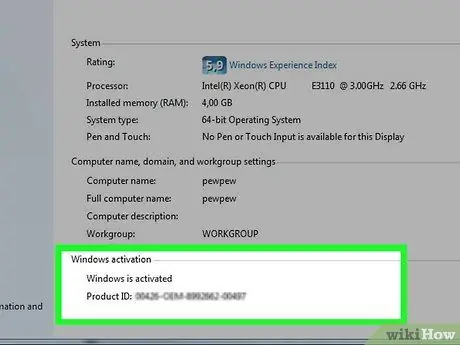
Step 2. Get a valid Windows 7 Professional product key
The downgrade rights you have will determine whether or not you should get an unused product key:
- If you do not have downgrade rights, you will need a valid Windows 7 product key, which is not used by other computers. If you are upgrading from Windows 7 and want to downgrade again, you can use the original Windows 7 key. If you buy a new computer that has Windows 8 installed, you can buy a Windows 7 key at a fairly cheap price from various sellers on the internet.
- If you have downgrade rights, you'll need the actual Windows 7 Professional product key, but not necessarily the new key. You may use a key that is currently using another computer. It also doesn't have to be your own key. The key is only used to bypass the activation process.
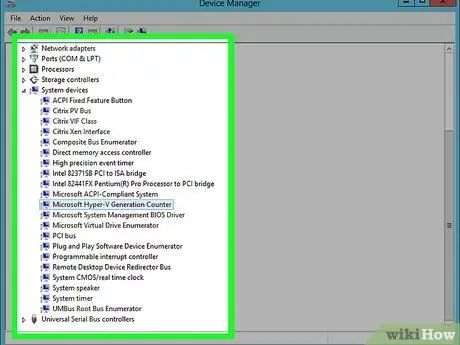
Step 3. Make sure your computer has Windows 7 drivers
If you purchased a computer with Windows 8 preinstalled, it may not be fully compatible with Windows 7. Check the drivers of all your hardware devices to make sure they can be used to downgrade because you may not be able to get Windows 7 drivers:
- If you have a factory-made computer (eg Dell, HP, Acer, etc.), visit the manufacturer's support site and find out what model of computer you have. You can usually find the model printed on the laptop keyboard, or on a sticker affixed to the bottom or back of the computer. In the " Driver " or " Downloads " section of the site, check for compatible drivers for Windows 7. If no Windows 7 drivers are available, your hardware may not work normally after downgrading.
- If you have a custom-built computer, or a computer that has been customized, check each piece of hardware manually. Open Device Manager by pressing Win key and typing devmgmt.msc. Go through your hardware list and visit the support site for each hardware device. Look for Windows 7 drivers for any hardware you have from the manufacturer. If the Windows 7 driver is not available, that piece of hardware may not work properly after you downgrade.
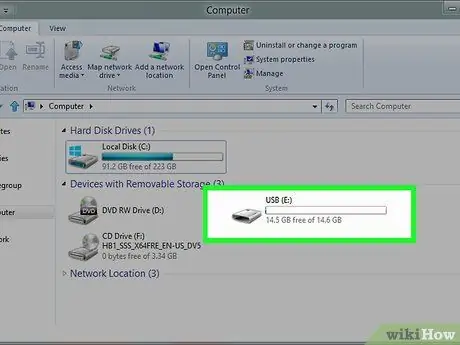
Step 4. Create a disc containing the driver (optional)
If you want to save time after the downgrade is complete, you can save all the Windows 7 drivers you need to a USB drive and keep the drive until you're done. You can use this USB drive to quickly install all the necessary drivers. The most important driver to have is a network adapter, as you will need it in order to connect to the internet and download other drivers.

Step 5. Find or create a Windows 7 Professional installation disc
This disc is required to downgrade your computer to Windows 7. It doesn't have to be yours, as you can use any Windows 7 Professional installation disc. If you don't have one, create an installation disc using the free software available from Microsoft:
- Visit the Microsoft Windows 7 download page and enter the key described in the previous step to download the ISO file.
- Once the ISO file is downloaded, insert a blank DVD or USB drive with a capacity of more than 4 GB.
- Download and install the Windows USB/DVD Download Tool.
- Run the program and select your Windows 7 Professional ISO file as "Source". Select a blank DVD or USB drive as " Destination ". The program will then copy or burn the ISO file, leaving you with a workable installation disc or drive.
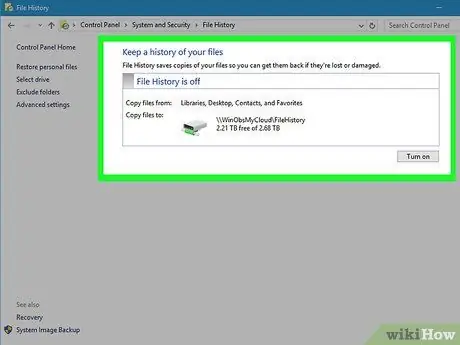
Step 6. Back up all important files
Downgrading to Windows 7 is basically the same as installing a new operating system, which will erase all data on the hard drive. Make sure all important files are safely backed up to a USB drive or cloud service before you start the downgrade process. For more instructions on how to back up data efficiently, read How to Back Up Your Computer.
Part 2 of 3: Downgrade to Windows 7
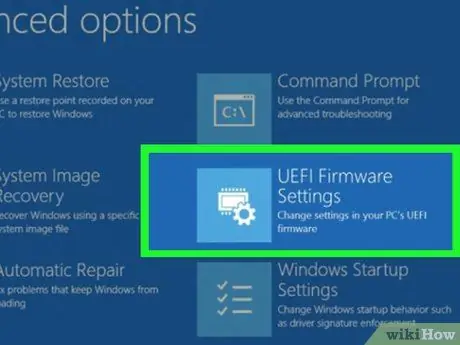
Step 1. Enable legacy boot function in UEFI settings menu
This must be done on computers that had Windows 8 installed when purchased, but need not be done on computers that have been upgraded to Windows 8 later. UEFI is the interface that controls the computer, and is a modern version of a BIOS. UEFI is not supported by Windows 7, so you must adjust the UEFI settings so that older BIOS can be supported. The process will vary depending on the computer you're using, but in general you can do it like this:
- Press Win+C or swipe the monitor screen from the right to open the Charms bar.
- Select "Settings" then "Change PC Settings".
- Click "Update and recovery", and select "Recovery". Click the "Restart Now" option under the "Advanced Startup" header.
- Select "Troubleshoot" when the computer reboots, then select "Advanced options".
- Click "UEFI Firmware Settings" then click "Restart".
- Look for "Legacy boot" or "BIOS mode" in UEFI settings and enable it. The location will vary depending on the manufacturer.
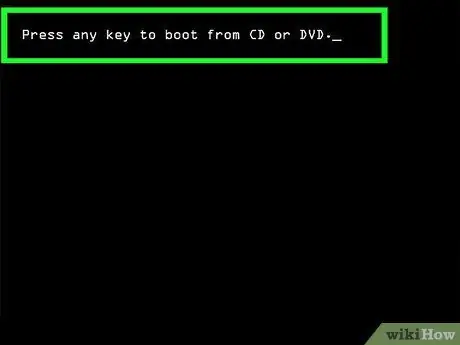
Step 2. Insert the Windows 7 installation disc or USB drive and restart the computer
The traditional BIOS startup screen will appear after the computer restarts, because you have enabled UEFI settings.
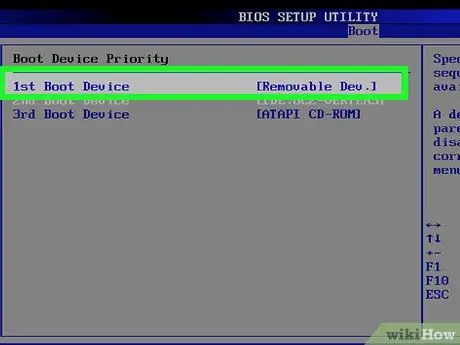
Step 3. Boot from the installation disc or drive
The process will vary depending on the computer you are using. Many computers display a " BOOT " button at startup so you can select the drive you want to boot from. If this option is not present, press the BIOS or SETUP key. Your BIOS/UEFI menu will open. From here you can select the " Boot " menu and then select the desired installation disc or drive.

Step 4. Begin the Windows 7 installation process
Press a key on your keyboard when prompted to start the Windows 7 installation process. It doesn't take long for the initial setup to load.
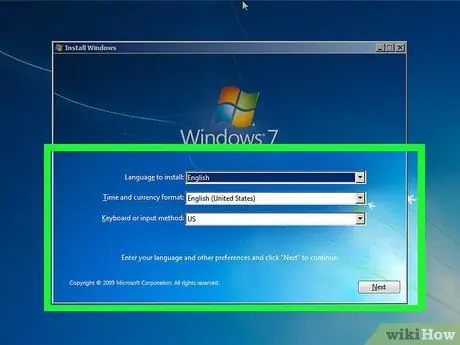
Step 5. Continue with your Windows 7 installation
Select the language and region settings in the Windows startup screen that appears.
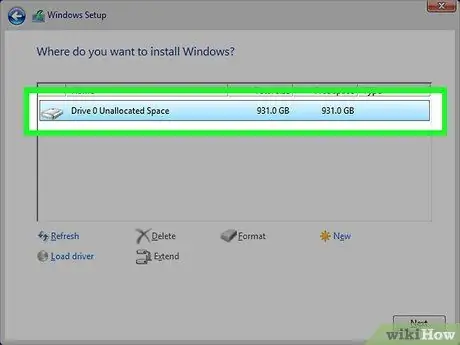
Step 6. Select the drive where Windows 8 will be installed when prompted
During the installation process, you must select the drive used to install Windows 7. Select the drive that is currently used to install Windows 8. Remember that this will delete everything stored on that drive.

Step 7. Enter the Windows 7 Professional key when prompted
Towards the end of the installation process, you will be asked to enter your Windows 7 product key. Enter the key you got in the first section. If you have downgrade rights, the key doesn't have to be a currently unused key.
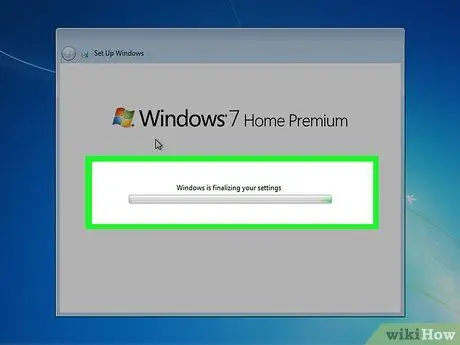
Step 8. Complete the installation and load your desktop
Once the key is entered, Windows 7 will complete the installation and finally your computer desktop will be displayed. If you're using downgrade rights, you'll most likely receive a message that says "Activation Failed" after Windows loads.
Part 3 of 3: Enabling Windows 7 Installation

Step 1. Open the Activation window if it doesn't open automatically
Windows 7 will attempt to activate automatically when you load the desktop for the first time and connect to the internet. If you use an unused Windows 7 key during the installation, it will be activated automatically without any problems. If you use downgrade, you may fail to activate automatically.
If the Activation window does not appear, click the Start menu, type "Activate", then click "Activate Windows"
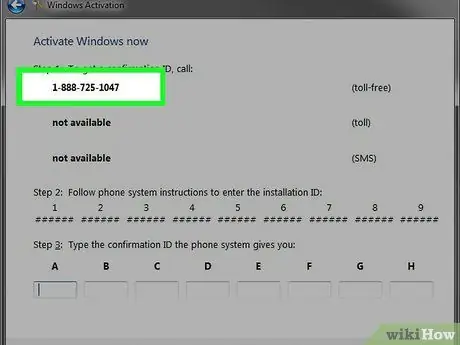
Step 2. Call the phone number that appears if the activation is not successful
If you exercise downgrade rights, you must call the Microsoft activation hotline and provide a Windows 8 Pro key to prove that you are allowed to downgrade Windows for free.
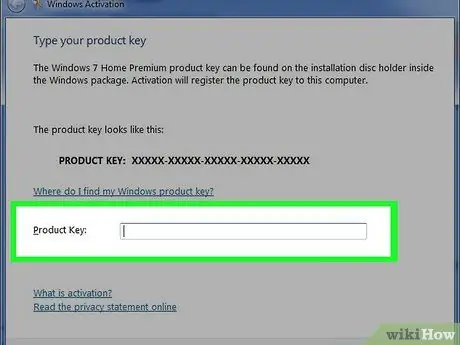
Step 3. Enter the code that Microsoft provided to activate Windows
If Microsoft can verify that you do have the right to downgrade Windows, you will be given a special code to enter the Activation window to activate your copy of Windows 7.
If you're downgrading on multiple computers, you can use the same Windows key when installing on each, but you'll need to contact Microsoft to activate each one

Step 4. Install your drivers
Once Windows is activated, you can focus on installing the. If you have previously created a driver disk, plug the USB disk in and start installing the driver. If you did not create a driver disc, run Windows Update and let the tool check for and download any available updates. When you're done, you can go back to Device Manager and manually update your hardware by right-clicking and selecting "Update Driver Software".






